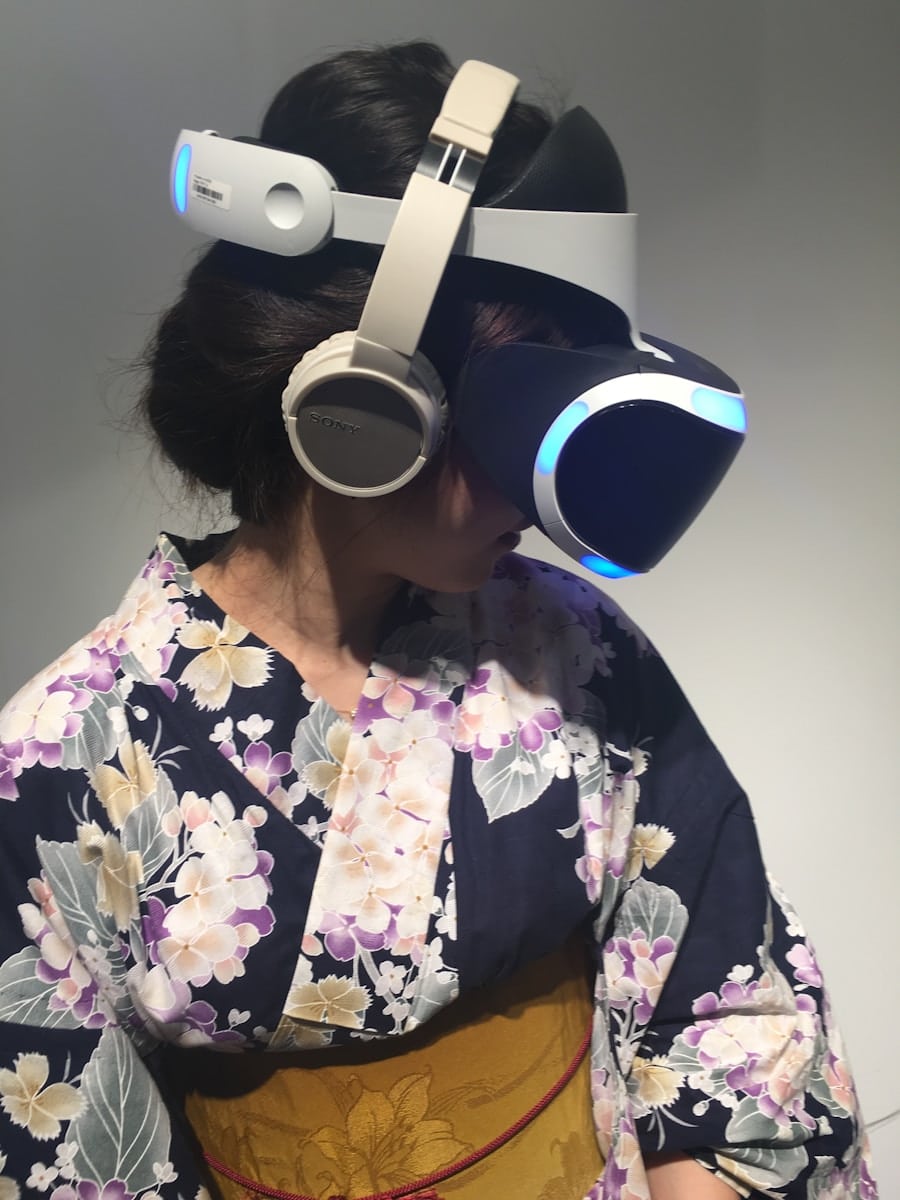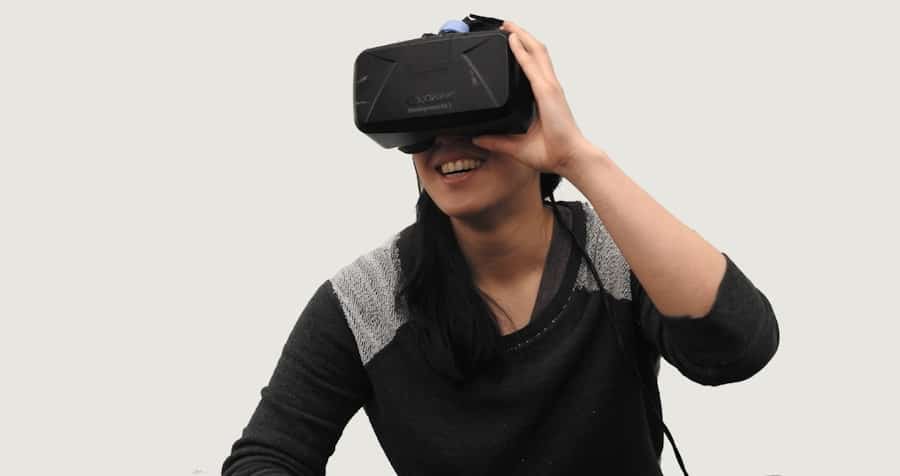Virtual Reality (VR) has emerged as a transformative technology in various fields, and language learning is no exception. By creating immersive environments that simulate real-world interactions, VR offers learners a unique platform to practice and acquire new languages. Unlike traditional methods that often rely on textbooks and rote memorization, VR language learning engages users in dynamic scenarios where they can interact with virtual characters, navigate through lifelike settings, and experience the language in context.
This innovative approach not only makes learning more enjoyable but also significantly enhances retention and practical application. The integration of VR into language education is not merely a trend; it represents a paradigm shift in how languages are taught and learned. With the ability to transport learners to different cultural settings—from bustling markets in Tokyo to serene cafés in Paris—VR provides an unparalleled opportunity for contextual learning.
This immersive experience allows students to practice speaking, listening, and comprehension skills in environments that closely mimic real-life situations. As technology continues to evolve, the potential for VR to revolutionize language education becomes increasingly evident, promising a future where learning is both effective and engaging.
Key Takeaways
- VR language learning offers an immersive and interactive experience for learners.
- Immersive learning in VR can improve retention, engagement, and motivation.
- VR enhances language acquisition by providing real-life scenarios and cultural immersion.
- VR plays a crucial role in providing cultural immersion and authentic language experiences.
- VR helps overcome language learning challenges by providing a safe and supportive environment for practice and feedback.
The Benefits of Immersive Learning in VR
Immersive learning through VR offers several distinct advantages that traditional classroom settings cannot replicate. One of the most significant benefits is the heightened level of engagement it fosters among learners. In a VR environment, students are not passive recipients of information; instead, they actively participate in their learning journey.
This active involvement leads to increased motivation and enthusiasm for language acquisition. For instance, a student practicing Spanish might find themselves in a virtual marketplace where they must negotiate prices and interact with vendors, making the experience both practical and enjoyable. Moreover, immersive learning environments can cater to various learning styles, accommodating visual, auditory, and kinesthetic learners alike.
For visual learners, the vibrant graphics and interactive elements of VR can enhance understanding and retention of vocabulary and grammar structures. Auditory learners benefit from hearing native speakers in context, while kinesthetic learners engage through physical movement and interaction with the virtual world. This multifaceted approach ensures that all learners can find a method that resonates with them, ultimately leading to more effective language acquisition.
How VR Enhances Language Acquisition

The mechanics of language acquisition are complex, involving various cognitive processes such as memory retention, contextual understanding, and social interaction. VR enhances these processes by providing a rich, contextual backdrop for language use. When learners are placed in realistic scenarios where they must communicate effectively, they are more likely to remember vocabulary and phrases due to the emotional and situational context surrounding their use.
For example, a learner practicing French might find themselves ordering food at a virtual restaurant, which not only reinforces vocabulary related to dining but also helps them understand cultural nuances associated with French cuisine. Additionally, VR facilitates immediate feedback, which is crucial for language development. In traditional settings, learners may wait for a teacher’s correction or feedback on their pronunciation or grammar usage.
In contrast, VR applications can provide instant responses through voice recognition technology or interactive prompts.
The ability to practice speaking without the fear of judgment from peers also encourages learners to take risks and experiment with new phrases or structures.
The Role of VR in Cultural Immersion
Language is deeply intertwined with culture, and understanding cultural context is essential for effective communication. VR excels in providing cultural immersion experiences that go beyond mere vocabulary acquisition. By simulating real-life cultural scenarios—such as attending a local festival or participating in traditional ceremonies—VR allows learners to experience the customs, traditions, and social norms of the target language’s culture firsthand.
This exposure fosters a deeper appreciation for the language and its speakers, enriching the overall learning experience. For instance, a learner studying Mandarin might engage in a virtual tour of Beijing during the Chinese New Year celebrations. They could witness traditional lion dances, learn about the significance of various customs, and even practice relevant vocabulary related to the festivities.
Such experiences not only enhance linguistic skills but also cultivate cultural sensitivity and awareness. As learners navigate these virtual environments, they develop a more nuanced understanding of how language functions within its cultural context, preparing them for real-world interactions with native speakers.
Overcoming Language Learning Challenges with VR
Language learning often presents various challenges that can hinder progress, such as anxiety during speaking practice or difficulty in retaining vocabulary. VR addresses these issues by creating a safe space for learners to practice without the pressure of real-world consequences. In a virtual setting, students can rehearse conversations multiple times until they feel confident enough to engage in actual dialogues.
This repeated practice helps reduce anxiety associated with speaking a new language, allowing learners to build their confidence gradually. Furthermore, VR can assist in overcoming geographical barriers that limit access to native speakers or immersive environments. Many learners may find themselves isolated from communities where their target language is spoken.
Through VR platforms, they can connect with virtual communities or engage with AI-driven characters that simulate native speakers. This accessibility ensures that learners have ample opportunities to practice their skills regardless of their physical location, making language learning more inclusive and equitable.
The Future of VR Language Learning

Personalized Learning Experiences
Future applications may analyze individual learner behaviors and preferences to tailor lessons specifically to their needs, ensuring that each student receives a customized learning experience that maximizes their potential for success.
Accessibility and Adoption in Education
As VR hardware becomes more affordable and accessible, educational institutions may increasingly adopt these technologies into their curricula. Schools and universities could create dedicated VR labs where students can immerse themselves in language learning alongside their peers.
Redefining Language Acquisition
The integration of VR into mainstream education could redefine how languages are taught globally, making immersive learning an integral part of language acquisition.
Tips for Getting the Most Out of VR Language Learning
To maximize the benefits of VR language learning, learners should consider several strategies that enhance their experience.
Whether aiming to improve conversational skills or expand vocabulary, having specific objectives helps maintain focus during practice sessions.
Additionally, learners should engage with various VR applications to explore different aspects of the language—such as grammar exercises, pronunciation drills, or cultural simulations—to create a well-rounded learning experience. Another effective strategy is to complement VR practice with traditional study methods. While immersive experiences are invaluable, reinforcing what has been learned through reading books or engaging in conversation with native speakers can solidify knowledge retention.
Furthermore, participating in online forums or communities dedicated to language exchange can provide additional opportunities for practice outside the virtual realm. By combining these approaches, learners can create a comprehensive language acquisition strategy that leverages the strengths of both immersive technology and conventional methods.
The Impact of VR on Language Education
The impact of Virtual Reality on language education is profound and multifaceted. By offering immersive experiences that engage learners on multiple levels—cognitively, emotionally, and socially—VR has the potential to transform how languages are taught and learned. As this technology continues to evolve and become more integrated into educational frameworks, it promises to break down barriers associated with traditional language learning methods.
The future holds exciting possibilities for VR language learning as it becomes more accessible and personalized. With ongoing advancements in technology and pedagogy, educators and learners alike can look forward to a new era where language acquisition is not only effective but also deeply enriching and enjoyable. As we embrace these innovations, we move closer to realizing the full potential of immersive learning experiences that prepare individuals for meaningful communication in an increasingly interconnected world.
If you are interested in exploring innovative technology tools for language learning, you may also want to check out NeuronWriter Review: The Best Content SEO Optimization Tool. This article discusses how NeuronWriter can help users create optimized content for language learning platforms, enhancing the overall learning experience. By incorporating tools like NeuronWriter alongside VR technology, language learners can access a more comprehensive and engaging learning environment.
FAQs
What is VR?
VR stands for virtual reality, which is a computer-generated simulation of an environment that can be interacted with in a seemingly real or physical way by a person using special electronic equipment, such as a helmet with a screen inside or gloves fitted with sensors.
How does VR facilitate immersive language learning experiences?
VR facilitates immersive language learning experiences by creating a virtual environment where learners can practice their language skills in real-life scenarios. This allows learners to engage in authentic conversations, cultural experiences, and interactive activities that enhance their language acquisition.
What are the benefits of using VR for language learning?
The benefits of using VR for language learning include increased engagement and motivation, the ability to practice language skills in realistic scenarios, personalized learning experiences, and the opportunity to interact with native speakers in a virtual environment.
What are some examples of VR language learning applications?
Some examples of VR language learning applications include virtual language exchange platforms, immersive language learning games, virtual reality language classrooms, and interactive cultural experiences in VR.
Is VR suitable for all language learners?
While VR can be a valuable tool for many language learners, it may not be suitable for everyone. Some learners may experience motion sickness or discomfort when using VR equipment, and others may prefer traditional language learning methods. It’s important to consider individual preferences and needs when incorporating VR into language learning programs.

